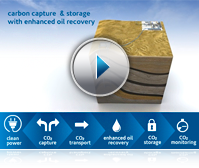Posted: February 18, 2013
One of HECA’s distinguishing factors is its multi-purpose design and process. It starts by creating clean hydrogen, which is produced by gasifying petroleum coke (a low-value by-product that comes from oil refining) and coal. The hydrogen is then used for two purposes: as a clean fuel to generate nearly 300 megawatts of electricity; and to produce a much needed local source of low-carbon fertilizer.
This unique, clean energy process will enable HECA to be among the cleanest, commercial-scale fertilizer manufacturing facilities not only in California but in the entire U.S.
In addition, the local production of fertilizer, valued at $1 billion, will reduce transportation costs and the nation’s dependence on imports. Overall, agricultural end-users in California and the U.S. will benefit in many ways from this new, readily available domestic source of accessible, high-quality fertilizer.
VN:F [1.9.22_1171]
Rating: 3.0/5 (6 votes cast)
Posted: November 10, 2010
The HECA project will generate clean low-carbon electricity by transforming fossil fuels into clean hydrogen that provides reliable, ongoing energy to the grid. Renewables such as wind or solar typically produce intermittent electricity that is available approximately one third of the time. Since our society’s demand for energy is constant, we can only rely so much on wind and solar energy. For this reason, HECA will produce a stable and predictable source of low-carbon electricity. In fact, HECA will generate enough clean electricity for 160,000 homes while it produces lower air emissions than any conventional plant of its size.
VN:F [1.9.22_1171]
Rating: 3.5/5 (15 votes cast)
Posted: November 10, 2010
Most electricity is generated by burning fossil fuels, which emit carbon dioxide into the atmosphere. Carbon dioxide, or CO2, is a greenhouse gas that is widely accepted as responsible for climate change. HECA sets itself apart by creating electricity without any fossil fuel combustion. The project will convert coal and petroleum coke into CO2 and clean hydrogen while using brackish, non-potable water. HECA will use clean hydrogen to produce a stable flow of electricity while permanently capturing the CO2 before it is emitted into the air. By using brackish, non-potable water, HECA will preserve California’s freshwater resources.
VN:F [1.9.22_1171]
Rating: 3.9/5 (17 votes cast)
Posted: November 10, 2010
California has shown leadership in addressing the climate change issue and is a fitting location for the HECA project which would prove the application of the hydrogen power and carbon capture and storage concept to solid fuels, such as petcoke or coal. There are also very compelling economic development reasons for building this high tech facility in California namely job creation and new local tax revenues. Demonstration of the concept for future application in countries such as China will be a significant step. China and other countries are also dedicating considerable time and money to identifying potential technologies and projects that will demonstrate the enormous environmental and economic benefits that CCS can bring.
VN:F [1.9.22_1171]
Rating: 3.5/5 (13 votes cast)
Posted: November 10, 2010
Petcoke is a synthetic product similar to coal so the technology used here will be very similar to the gasification of coal, so the lessons learned in this project will also be relevant for coal. Demonstrating capture and storage of approximately 90% of the carbon in coal in combination with industrial scale power generation would be a significant step in securing adequate supplies of clean energy for the medium term.
VN:F [1.9.22_1171]
Rating: 0.0/5 (0 votes cast)

